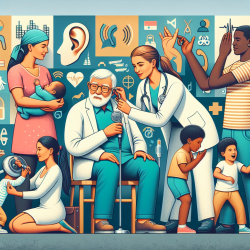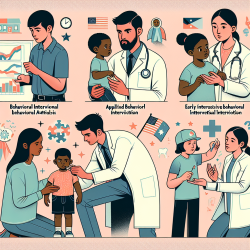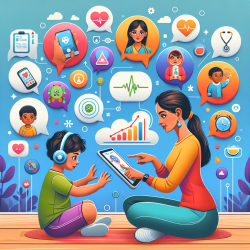Introduction
Hearing loss is a significant global health issue, affecting millions of individuals worldwide. The traditional clinic-based model of hearing care often fails to reach those in need, especially in underserved communities. The research article "Hearing care across the life course provided in the community" explores innovative approaches to expand hearing care accessibility through community health workers (CHWs). This blog delves into the key findings and practical applications of this research, offering insights for practitioners to enhance their skills and promote equitable hearing care.
Community-Delivered Hearing Care: A New Paradigm
The research highlights the potential of community-delivered hearing care as a means to bridge the gap between clinical services and underserved populations. By leveraging CHWs, communities can deliver essential hearing care services, from screenings to rehabilitation, directly to those who need them most. This approach not only increases accessibility but also fosters a sense of community involvement and empowerment.
Key Takeaways for Practitioners
- Task Shifting: By training CHWs to perform basic hearing care tasks, practitioners can extend their reach and impact. This includes conducting screenings, providing education, and facilitating access to further care.
- Technology Integration: Utilizing mobile health (mHealth) technologies, such as smartphone-based audiometers, can enhance the efficiency and effectiveness of community-delivered hearing care.
- Cultural Sensitivity: CHWs often share cultural and linguistic backgrounds with the communities they serve, allowing them to tailor services to meet the specific needs and values of their patients.
- Collaboration and Supervision: Effective community-delivered hearing care requires collaboration between CHWs and professional healthcare providers, ensuring quality and consistency in service delivery.
Encouraging Further Research
The preliminary evidence supporting community-delivered hearing care is promising, but further research is needed to refine and optimize these models. Practitioners are encouraged to engage in ongoing research efforts to explore new technologies, training methods, and policy frameworks that can enhance the effectiveness of community-based hearing care.
Conclusion
Community-delivered hearing care represents a transformative approach to addressing the global burden of hearing loss. By embracing task shifting, integrating technology, and fostering collaboration, practitioners can play a crucial role in advancing hearing health equity. As the field continues to evolve, ongoing research and innovation will be key to unlocking the full potential of community-delivered hearing care.
To read the original research paper, please follow this link: Hearing care across the life course provided in the community.










